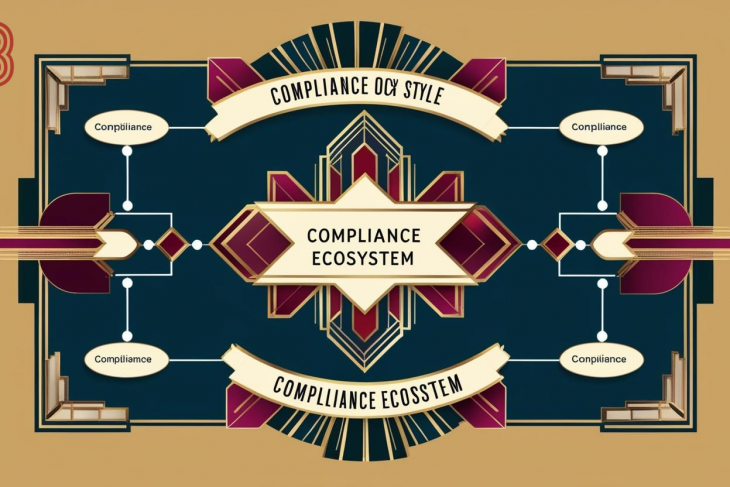
Introduction
In today’s interconnected digital landscape, the complexity and frequency of cyber threats continue to rise, necessitating advanced security solutions capable of identifying, managing, and mitigating these risks effectively. Extended Detection and Response (XDR) has emerged as a pivotal evolution in cybersecurity, designed to offer a holistic approach to threat detection, investigation, and response across various security layers.
Evolution of Cybersecurity and the Need for XDR
Traditional cybersecurity approaches often rely on siloed tools that provide limited visibility and response capabilities across different domains such as network, endpoint, cloud, and identity. Security Information and Event Management (SIEM) systems and Endpoint Detection and Response (EDR) tools have been essential, yet they are sometimes insufficient for correlating data and responding to threats across diverse and distributed environments.
The growing sophistication of cyber threats, including advanced persistent threats (APTs), ransomware, and supply chain attacks, requires a coordinated and intelligent response mechanism. XDR addresses this gap by unifying security tools into an integrated platform that automates threat detection and response, improving visibility and operational efficiency.
Understanding Extended Detection and Response (XDR)
XDR is a cybersecurity solution that integrates multiple security products into a cohesive system. It collects and correlates data across endpoints, networks, servers, cloud workloads, and email security, providing a centralized platform for detecting, investigating, and responding to threats.
Key features of XDR include:
Cross-domain visibility: XDR gathers data from various security layers, offering a broader view of an organization’s threat landscape.
Automated detection and response: Utilizing machine learning and behavioral analytics, XDR automates the identification and mitigation of threats.
Integrated threat intelligence: XDR platforms incorporate real-time threat intelligence to enhance detection accuracy.
Centralized investigation: Security teams can conduct investigations from a unified console, reducing the time to detect and respond (MTTD and MTTR).
Role of XDR in Cyber Risk Management
Cyber risk management involves identifying, assessing, and mitigating risks to an organization’s information assets. Effective risk management requires visibility, threat intelligence, and the ability to respond rapidly to incidents. XDR contributes significantly to this process in several ways:
1. Enhanced Threat Detection
XDR’s ability to correlate data from multiple sources improves the detection of complex and stealthy threats that may go unnoticed in isolated systems. By identifying indicators of compromise (IOCs) and tactics, techniques, and procedures (TTPs), XDR provides a proactive approach to risk identification.
2. Efficient Incident Response
XDR streamlines the incident response process by automating threat containment and remediation. For example, when a malicious activity is detected on an endpoint, XDR can automatically isolate the device, block malicious IPs at the network level, and initiate forensic analysis.
3. Risk Prioritization
By providing contextual information and risk scores, XDR enables security teams to prioritize incidents based on potential impact, ensuring that critical threats are addressed promptly.
4. Compliance and Reporting
XDR platforms can generate detailed logs and reports required for compliance with standards such as GDPR, HIPAA, and ISO 27001. These capabilities help organizations demonstrate due diligence in their cyber risk management efforts.
5. Operational Efficiency
The integration and automation capabilities of XDR reduce the burden on security operations centers (SOCs), allowing teams to focus on strategic tasks rather than manual data correlation and analysis.
Benefits of XDR in Cyber Risk Management
Implementing XDR provides numerous advantages for organizations aiming to enhance their cyber resilience:
Unified security operations: Centralizing detection and response across domains streamlines security workflows.
Reduced detection and response times: Automation and advanced analytics help detect and mitigate threats faster.
Lower total cost of ownership (TCO): By consolidating multiple security tools, XDR reduces operational costs and tool sprawl.
Improved threat context: Correlated data provides deeper insights into the scope and impact of attacks.
Better scalability and adaptability: Cloud-native XDR solutions can scale with an organization’s growth and evolving threat landscape.
Challenges in Implementing XDR
Despite its benefits, XDR implementation is not without challenges:
Integration complexities: Integrating existing security infrastructure with an XDR platform can be complex and resource-intensive.
Vendor lock-in: Some XDR solutions may be proprietary, limiting flexibility and interoperability with third-party tools.
Data privacy concerns: Aggregating and analyzing data across multiple domains may raise privacy and regulatory compliance issues.
Skilled workforce requirement: Effective use of XDR requires skilled analysts and understanding of its capabilities and limitations.
XDR vs. SIEM and EDR
XDR is often compared with traditional security solutions like SIEM and EDR. While they share some similarities, their scopes and capabilities differ:
SIEM: Focuses on log management, compliance, and event correlation from various sources. Requires extensive tuning and often generates high volumes of alerts.
EDR: Concentrates on endpoint-level threat detection and response. Limited visibility across network or cloud.
XDR: Offers a comprehensive, integrated approach across multiple domains, reducing the need for manual correlation and increasing detection fidelity.
While SIEM remains valuable for compliance and long-term data retention, and EDR is critical for endpoint security, XDR serves as a bridge, enhancing and unifying their capabilities.
Real-World Applications and Case Studies
Organizations across sectors are adopting XDR to bolster their security posture. For instance:
Financial Institutions: A multinational bank deployed an XDR platform to monitor endpoints, servers, and network traffic. The system detected lateral movement associated with a ransomware attack and initiated an automated response, preventing data exfiltration.
Healthcare Providers: A hospital system used XDR to detect unauthorized access to patient records. The system correlated anomalous login patterns and device access, enabling rapid containment and notification.
Retail Chains: A global retailer leveraged XDR to monitor supply chain partners. When a third-party vendor’s system was compromised, XDR identified suspicious communications and blocked the threat before it affected core systems.
These examples highlight XDR’s versatility and value in diverse environments.
Future of XDR in Cyber Risk Management
The future of XDR is promising, with ongoing advancements in AI, machine learning, and cloud computing enhancing its capabilities. Key trends include:
AI-driven threat hunting: Enhanced automation and predictive analytics will empower proactive threat identification.
Integration with SOAR: Combining XDR with Security Orchestration, Automation, and Response (SOAR) tools will further streamline incident response workflows.
Expanded coverage: Future XDR platforms will offer deeper integration with IoT, OT, and hybrid cloud environments.
Open XDR models: Encouraging interoperability and avoiding vendor lock-in, open XDR models will gain traction.
As organizations continue to face evolving threats, XDR will play a central role in a risk-based cybersecurity strategy.
Summary
Extended Detection and Response represents a significant advancement in the field of cybersecurity, providing organizations with a comprehensive, integrated approach to threat detection, investigation, and response. By enhancing visibility, automating responses, and facilitating better risk prioritization, XDR serves as a crucial component of effective cyber risk management.
However, successful implementation requires careful consideration of existing infrastructure, integration capabilities, and workforce skills. With the right strategy, XDR can dramatically improve an organization’s security operations, reduce exposure to cyber risks, and ensure compliance with regulatory standards.
In an era where cyber threats are growing in scale and sophistication, XDR offers a path forward for organizations seeking to build resilient, adaptive, and intelligent security frameworks.




















